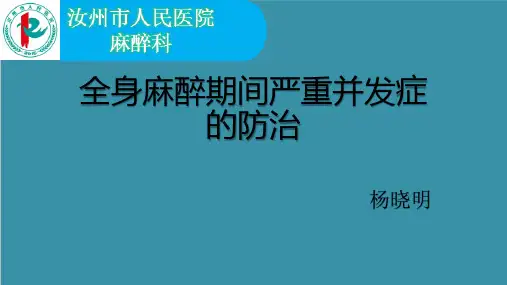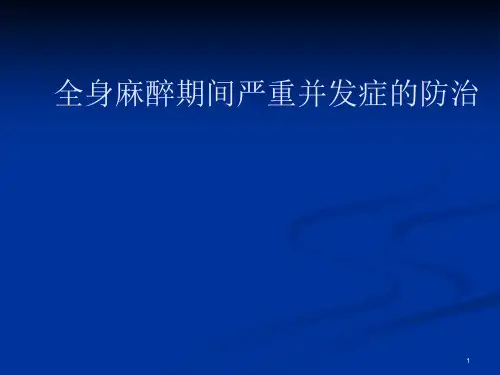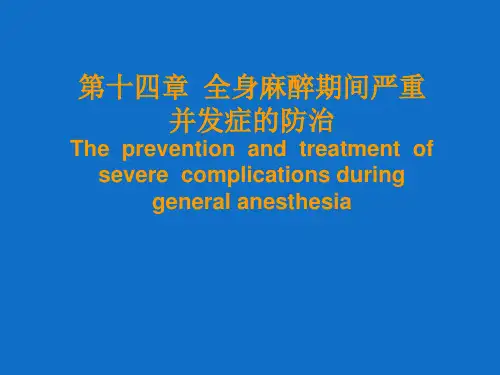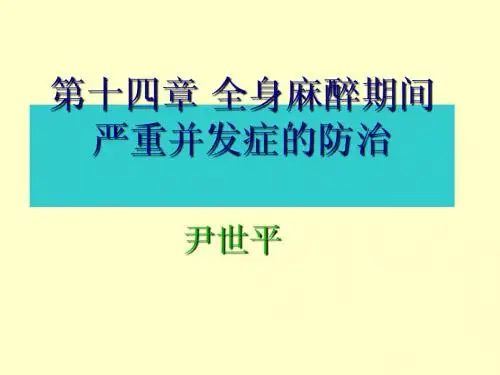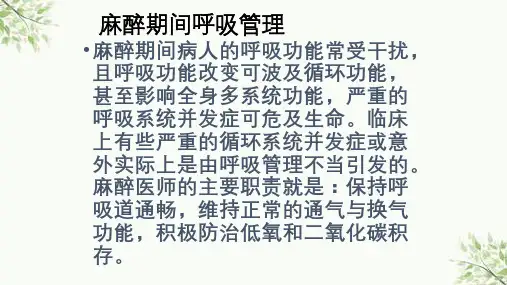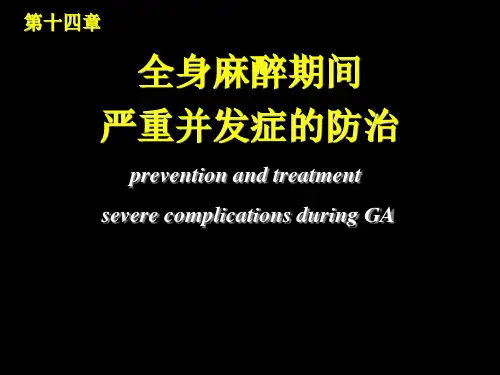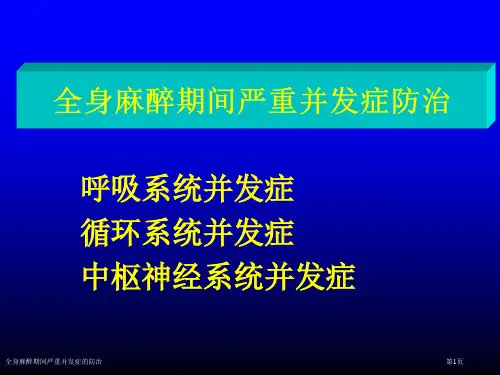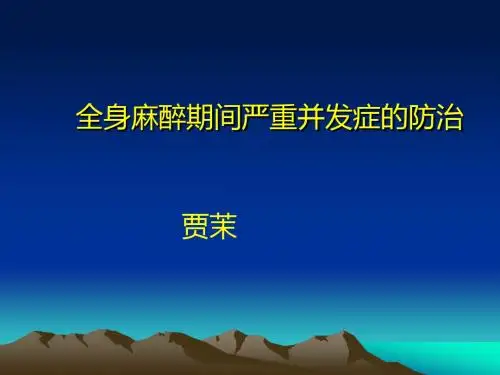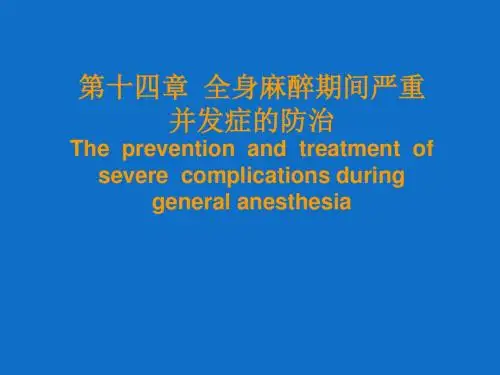4、不良习惯
未插管前进行腹部触诊致反流误吸 助手以肘部或器械压迫病人胸部而影 响呼吸与循环功能等
(四)环境因素
通风不良、湿热流汗、灯光刺眼、 声音嘈杂、谈论与手术无关事宜等,致 使医护人员精力分散
在以上诸多风险原因中: 病人因素占83% 手术因素占10% 麻醉因素占4% 术后处理不当占3% 而麻醉风险因素的排位应为: 准备不足→选择不当→救治不力→药物过量
四、插管位置异常、管腔堵塞、 麻醉机故障
五、气管受压 六、口咽腔炎性病变、喉肿物
过敏性喉水肿
七 喉痉挛与支气管痉挛 Laryngospasm and Bronchospasm
常见于哮喘、慢性支气管炎、肺气肿、过敏 性鼻炎 ㈠ 喉痉挛(laryngospasm): Laryngospasm is a reflex, prolonged closure of the vocal cords in response to a trigger, usually airway stimulation during light anesthesia (呼吸道保护性反射→声门闭合反射过度亢进)
无呼吸交换,SpO2↓
Reduced muscle tone with apposition of the tongue and pharyngeal soft tissue is a common cause This is usually overcome by jaw lift and use of an oral or nasopharygeal airway The patients should be placed in a head-down position
应激性↑→声门关闭活动↑ ◆发生于全麻Ⅰ~Ⅱ期(浅全麻)
